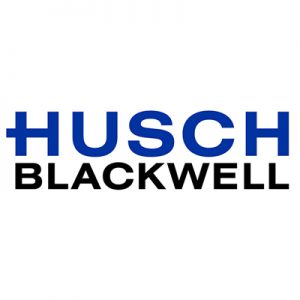As 2021 progresses, the use of LIBOR is drawing to an end. For decades, financial institutions have used LIBOR (the London Interbank Offered Rate) as the prevailing reference rate for determining interest rates in commercial and financial transactions. As a result of changes in the financial markets and as a response to the manipulation of LIBOR by several banks almost a decade ago, the United Kingdom’s Financial Conduct Authority (the FCA) announced in 2017 it did not expect LIBOR to remain as an acceptable benchmark for the setting of interest rates beyond 2021.
Although the transition away from LIBOR to a new reference rate is less than established at this point, there are some settled ways to deal with the transition and trends in what reference rate will replace LIBOR. This article provides a brief overview of the current state of LIBOR, how financial markets are handling the transition to a new benchmark reference rate, and what reference rates to which the markets are transitioning.
I. The Current State of LIBOR
LIBOR is an interest rate average calculated from estimates submitted by a panel of leading banks in London. Over the decades, its use grew so prevalent that financial and commercial contracts totaling nearly $200 trillion include LIBOR as a “base” interest rate. For years, however, regulators worldwide have raised concerns that LIBOR is not a reliable benchmark, as it is not based on a significant number of observable transactions. For example, there are 16 financial institutions whose submissions are used to calculate the U.S. Dollar LIBOR, and some of these banks have even been accused in the past of colluding to manipulate LIBOR rates.
On March 5, 2021, Intercontinental Exchange (ICE) and the FCA confirmed that LIBOR will phase out by June 30, 2023, and one-week and two-month LIBOR will cease being published December 31, 2021. On March 9, 2021, the Alternative Reference Rate Committee (the ARRC) confirmed that ICE’s announcement of a definitive cessation date for LIBOR tenors constituted a “Benchmark Transition Event,” beginning the process of switching from LIBOR. While this “Benchmark Transition Event” does not require an immediate transition, it does signal that the “Benchmark Replacement Date” is expected to be on or immediately after the following dates for LIBOR: (i) December 31, 2021, for one-week and two-month LIBOR, and (ii) June 30, 2023, for Overnight, one-month, three-month, six-month, and 12-month LIBOR.
II. How to Transition from LIBOR and the New Reference Rate
It has been recommended that new contracts entered into before December 31, 2021, should either utilize a reference rate other than LIBOR or have robust fallback language that includes a clearly defined alternative reference rate after the publication of LIBOR ceases. The ARRC, a group of private-market participants convened by the Federal Reserve Board and the Federal Reserve Bank of New York (the N.Y. Fed), has proposed using the Secured Overnight Financing Rate (SOFR) as the LIBOR replacement.
SOFR is the interest rate that banks impose on each other in making loans secured by U.S. treasuries. It is a risk-free, daily, overnight rate and based on actual interbank transactions with daily volumes approaching $1 trillion. Because LIBOR is a credit-sensitive rate and SOFR is a risk-free rate, the financial markets have established spread adjustments that can be added to SOFR in order to align more closely with the former LIBOR rate. In other words, whereas LIBOR is forward-looking so borrowers know the interest rate for a given interest period at the beginning of the period, SOFR is backward-looking and based on actual transactions already collateralized by treasuries. Backward-looking SOFR is calculated daily and can be simple (Daily Simple SOFR) or compounded (Daily Compounded SOFR). LIBOR fallback rate language may include, however, a concept whereby SOFR is determined by looking forward to a specified period of time and published by an authorized benchmark administrator. Such forward-looking SOFR is referred to as Term SOFR.
The ARRC has recommended the use of Daily Simple SOFR over Daily Compounded SOFR due to the minimal difference between the two and avoidance of complications in calculations. We have seen at least one market participant in a new contract use Daily Simple SOFR as the starting reference rate with fallback language to Term SOFR once it is established or a different rate becomes more appropriate. We have also heard some discussion of using other reference rates, which may be credit-sensitive rates, and such credit-sensitive rates may include a rate referred to as AMERIBOR – but we have not seen AMERIBOR’s or any other credit-sensitive rates’ utilization in new transactions or specifically included in LIBOR fallback provisions.
III. How Can You Protect Yourself?
Going forward, you should address the legal and operational risks you might have with LIBOR transition. You should first examine your existing loan documents and other contracts and quantify any LIBOR exposure. If you have any contracts that use LIBOR as a reference rate, a review should be conducted on the actual language in each contract to identify how each contract will determine a replacement rate when LIBOR ceases. Fallback language that only addresses the temporary unavailability of LIBOR may not be sufficient to handle the permanent discontinuance of LIBOR. Moreover, if existing loan documents and other contracts include a fallback to the “prime rate”, it still might not be an ideal long-term reference rate since the prime rate is usually higher than LIBOR and may not be an acceptable long-term replacement to your borrowers.
Lastly, for any loan documents or other contracts that use LIBOR, you should consider approaching your borrowers or other contract counterparties to propose amendments to provide clear and specific language that addresses how to transition to a new reference rate. If you use third-party vendors to produce your loan documents or maintain any of your operations systems, you should contact them regarding any upcoming steps they are taking to transition away from LIBOR and that their systems will be updated appropriately in a timely manner.
There is still a lot of uncertainty on what the LIBOR transition will bring, and although this transition may be disruptive in the short term, moving to SOFR or another similar benchmark reference rate should bring further stability to the financial markets over the long term.
Christopher Rockers is a Kansas City-based partner with Husch Blackwell LLP and co-leads the firm’s LIBOR team.
Nicholas Kenney and Ani Kaufmann Mamisashvili are attorneys in Husch Blackwell LLP’s Kansas City office and are members of the firm’s Banking & Finance team.











